The Brazos Review: AMD's E-350 Supplants ION for mini-ITX
by Anand Lal Shimpi on January 27, 2011 6:08 PM ESTAMD has been curiously absent from the value netbook and nettop segments since Atom’s arrival nearly three years ago. These markets are highly profitable only for component vendors, as the OEMs that sell netbooks and nettops must survive on very slim margins in order to hit aggressive price points. It wasn’t too long ago that we were shocked by $699 desktop PCs, but to now be able to get a fully functioning portable PC with display at below $300 is impressive. In order for the profit equation to work out however, you can’t simply scale down a larger chip - you need an architecture targeted specifically at the type of very light workloads you expect to encounter in these segments. Underclocking and undervolting an architecture targeted at high end desktops or servers won’t cut it.
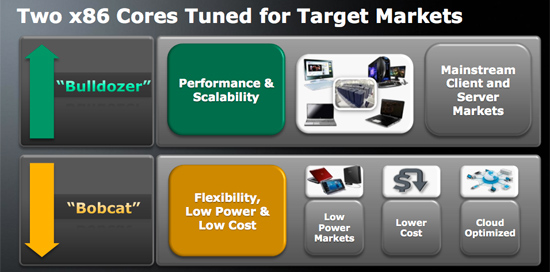
Generally a single microprocessor architecture can cover an order of magnitude of power envelopes. You can take an architecture from 10W - 100W using clock speed, voltage scaling and disabling features (e.g. cutting cache sizes). You can’t efficiently take a 100W architecture and scale it down to 1W. Intel realized this with Atom, and what resulted was a new architecture designed to span the 0.5W - 5W range. Given the constraints of the process (Atom was built at 45nm) and a desire to keep die size down to a minimum (and thus maximize profits), Intel went with a dual-issue in-order architecture reminiscent of the old Pentium - but with a modern twist.
AMD came to the same realization. For it to compete in these value markets, AMD couldn’t rely on its existing Phenom II derived architectures. The Phenom II and its relatives currently span a range of TDPs from 9W to 140W, and at the lower end of that spectrum we’re talking about some very low clock speeds and performance targets. Getting down to 1W was out of the question without a separate design.
What AMD came up with was a core called Bobcat, initially targeted for netbooks, notebooks, nettops and entry level desktops. Architecturally Bobcat is a significant step ahead of Atom: while still dual-issue, it features an out-of-order execution engine making it the Pentium Pro to Atom’s Pentium.
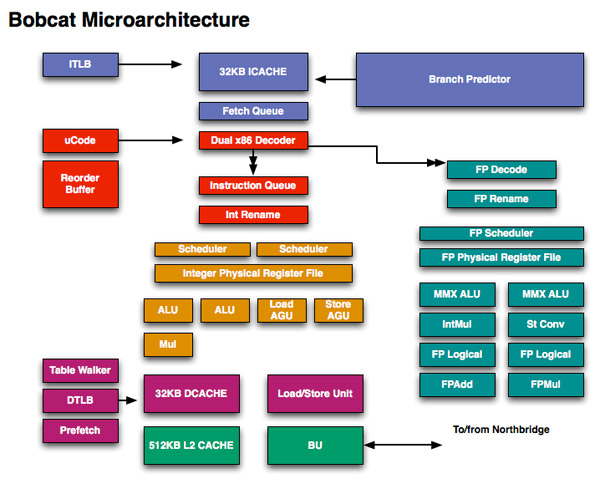
It isn’t just CPU architecture that AMD surpassed Atom with, the first incarnation of Bobcat is an integrated SoC with on-die DirectX 11 GPU. AMD calls this combination a Fusion APU (Accelerated Processing Unit) as it places both a CPU and GPU on a single die. The possible CPU/GPU combinations for Bobcat based APUs are listed in the table below:
| AMD Brazos Lineup | ||||||||
| APU Model | Number of Bobcat Cores | CPU Clock Speed | GPU | Number of GPU Cores | GPU Clock Speed | TDP | ||
| AMD E-350 | 2 | 1.6GHz | Radeon HD 6310 | 80 | 500MHz | 18W | ||
| AMD E-240 | 1 | 1.5GHz | Radeon HD 6310 | 80 | 500MHz | 18W | ||
| AMD C-50 | 2 | 1.0GHz | Radeon HD 6250 | 80 | 280MHz | 9W | ||
| AMD C-30 | 1 | 1.2GHz | Radeon HD 6250 | 80 | 280MHz | 9W | ||
AMD avoided branding its first APUs, they’re simply the AMD E-series and C-series Fusion APUs. The emphasis isn’t on the CPU or the GPU in this case, just the company name and a model number.
| CPU Specification Comparison | ||||||||
| CPU | Manufacturing Process | Cores | Transistor Count | Die Size | ||||
| AMD Zacate | 40nm | 2 | ? | 75 mm2 | ||||
| AMD Thuban 6C | 45nm | 6 | 904M | 346mm2 | ||||
| AMD Deneb 4C | 45nm | 4 | 758M | 258mm2 | ||||
| Intel Gulftown 6C | 32nm | 6 | 1.17B | 240mm2 | ||||
| Intel Nehalem/Bloomfield 4C | 45nm | 4 | 731M | 263mm2 | ||||
| Intel Sandy Bridge 4C | 32nm | 4 | 995M | 216mm2 | ||||
| Intel Lynnfield 4C | 45nm | 4 | 774M | 296mm2 | ||||
| Intel Clarkdale 2C | 32nm | 2 | 384M | 81mm2 | ||||
| Intel Sandy Bridge 2C (GT1) | 32nm | 2 | 504M | 131mm2 | ||||
| Intel Sandy Bridge 2C (GT2) | 32nm | 2 | 624M | 149mm2 | ||||
These APUs do need the aid of an additional chip - the Hudson Fusion Controller Hub (FCH). The FCH adds support for things like SATA, USB, Ethernet and Audio.The Hudson FCH is very tiny measuring approximately 4mm x 7mm for a total die size of around 28mm2.
The combination of these Bobcat based APUs and the FCH is called the Brazos platform.
Late last year AMD invited me to spend several hours with a Brazos system at its brand new campus in Austin, TX. While the preview gave us some insight into what we could expect from Brazos, I didn’t have enough time to really dive in as much as I would’ve liked to.
Earlier this month, AMD officially launched Brazos with hardware expected sometime this quarter. For the past couple of weeks I’ve been testing a Brazos mini-ITX motherboard from MSI and today, it’s time to break the silence and share the results. They are quite good.


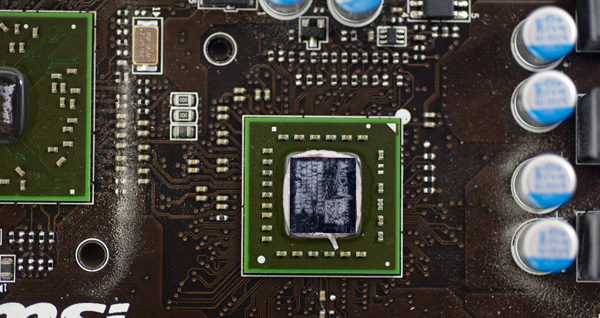
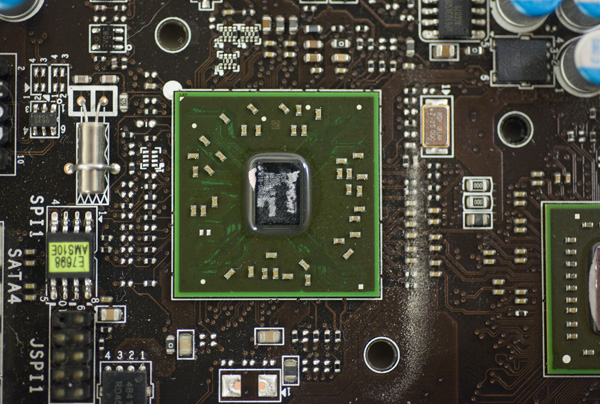
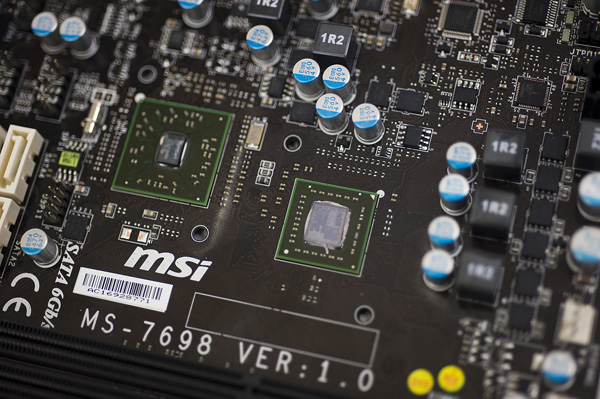
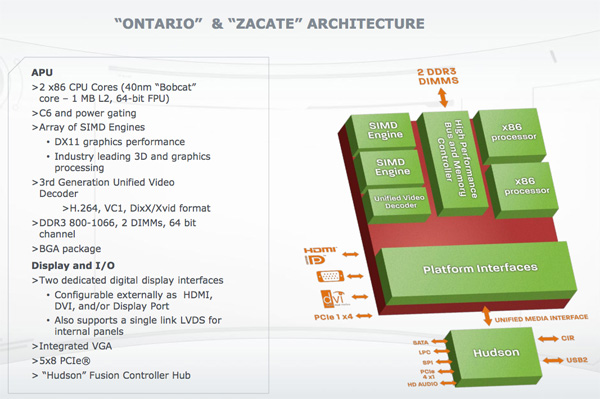








176 Comments
View All Comments
Scootiep7 - Friday, January 28, 2011 - link
The major problem is that Intel's drivers are flat out junk for anything Gaming/HTPC related. With ULV Sandy Bridge, you'll be paying three times as much for a complete system that performs less than half as well on most of the stuff you want to do with it in this market segment.redraider89 - Thursday, May 4, 2017 - link
Yes, yes it is.redraider89 - Thursday, May 4, 2017 - link
An unreleased processor can't beat an existing processor. So, yes, yes it is. It's absurd when people think just because they repeat their no's that gives what they are saying more legitimacy.Marlin1975 - Thursday, January 27, 2011 - link
Talk about good for a first try.Think about it; AMDs first shot into this area is as good or way better than the much updated Atom from intel.
Anand can you ask when amd thinks they will be able to move this to 32nm? Seems the design is good just needs updated shrinkage to increase the Mhz.
Also since this will not be in a netbook/laptop can you overlclock???
nitrousoxide - Thursday, January 27, 2011 - link
No 32nm Brazos parts, they will come directly with 28nm next year. Yes, 4 bobcat cores, VLIW 4D architecture GPUs, 2x performance at minimum or even higher if AMD gives it Turbo Boost feature.Overclocking doesn't make any sense on this chip, because no matter how you overclock it, the chip cannot do the things it can't do at default clock. it simply brings you more power consumption.
Marlin1975 - Thursday, January 27, 2011 - link
Overclock for the desktop not the netbook.Could make some items go from unusable to usable as a low power desktop replacement.
I like to see what would happen and what would help the most or not.
nitrousoxide - Thursday, January 27, 2011 - link
Try AMD Overdriveknedle - Saturday, January 29, 2011 - link
You can overclock everything (even a notebook), but since the board didn't support it, it's much harder. ;)I'm sure someone will release overclockable boards, it's just the matter of time.
Gigantopithecus - Thursday, January 27, 2011 - link
...ETA for Brazos mini-ITX availability in retail channels?I can't think of a reason to buy anything, be it a netbook or nettop or htpc, with an Atom in it given Brazos's performance and power consumption. Can't wait to start building Brazos systems!
codedivine - Thursday, January 27, 2011 - link
I am a little confused. If I put a graphics card in the x16 slot, will it run at x4 PCIe 2.0 speeds or x16 PCIe 2,0 speeds?